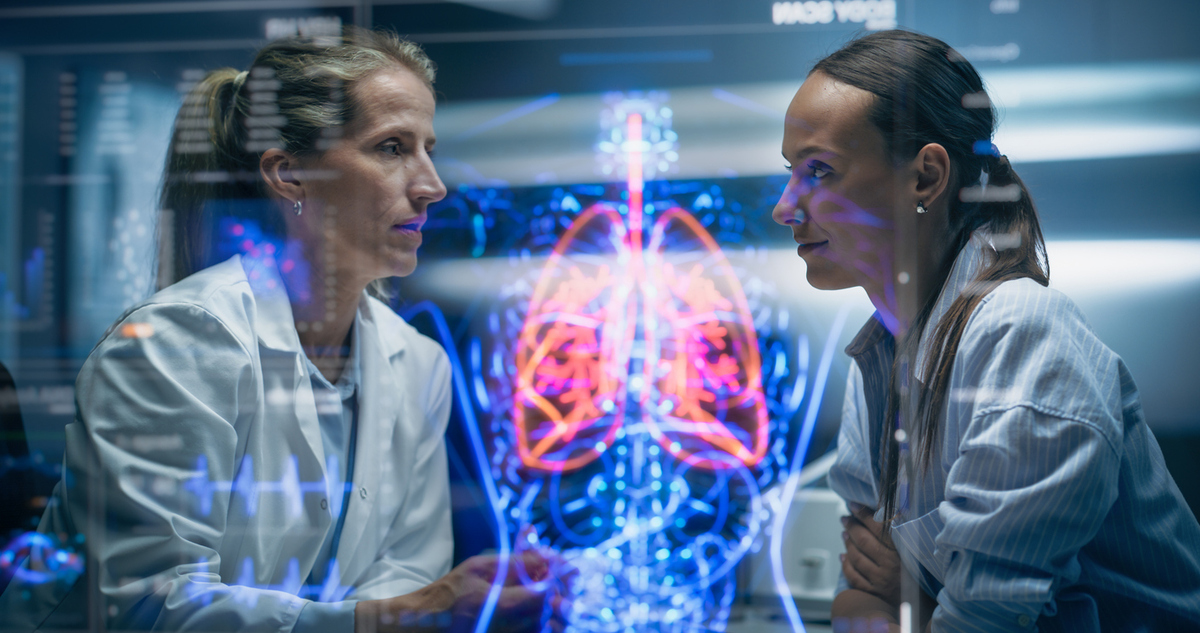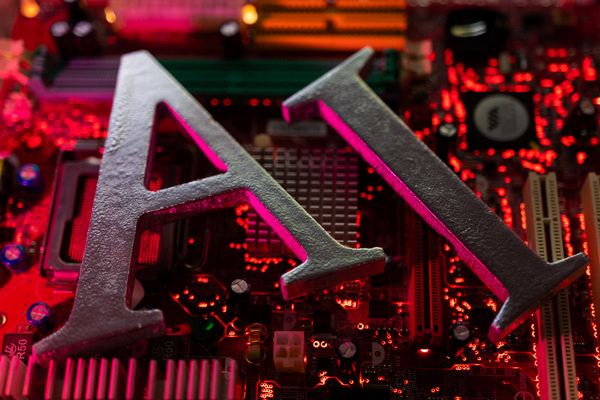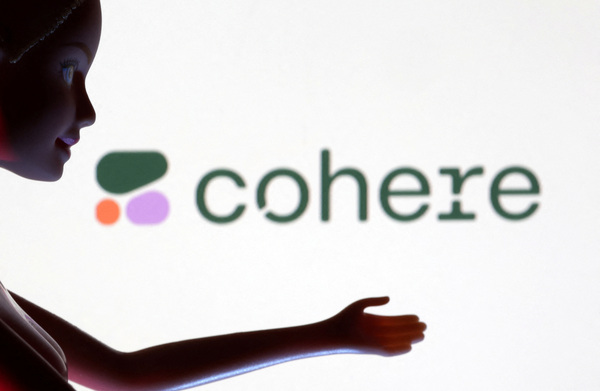Transforming healthcare with digital twins

Digital twin technology is revolutionising many industries. Healthcare, where the adoption of digital twins presents an unparalleled opportunity to enhance patient care, is no exception.
A digital twin (DT) is a virtual replica of a physical system such as a human body, an artificial organ, an implanted medical device or a hospital procedure. It enables the modelling of patients’ physiologies, the simulation of treatment outcomes, the prediction of disease in different circumstances, the creation of personalised diagnostics and treatments and even the optimisation of hospital systems such as bed and theatre allocation.
However, despite their potential, DTs face significant challenges. In particular, they rely on large quantities of data, which must be accurate and comprehensive. In addition, there are difficult ethical issues regarding privacy and accountability.
Benefits of digital twins in healthcare
Personalising medicine
One of the most promising uses of DTs in healthcare is patient modelling. Every patient is unique, and how they respond to medications or treatments can vary based on genetics, lifestyle and underlying health conditions.
By creating a full digital representation of an individual or part of an individual, such as their heart, medical professionals can simulate various physiological conditions and explore the likely outcomes of different treatments. For instance, in cardiology, digital twins create accurate simulations of patients’ hearts which allow doctors to trial different interventions before performing procedures, reducing risks and improving success rates. Similarly, in oncology, digital twins help model tumour growth and responses to different treatments, leading to more targeted and effective therapies.
These digital models use data from medical history, image scans, genetics and lifestyle, as well as real-time data from wearable devices and implants, and they provide insights that allow clinicians to gain a deeper understanding of a patient’s health and the best options for their future treatment.
These insights are significant because traditional medical practice often relies on treatments that have been shown to work well in general, across particular groups of people. Digital twins enable medicine to be much more personalised by simulating how different treatments are likely to affect an individual before the treatment is started. This predictive capability allows for more tailored therapies, such as identifying the most effective drug or combination of drugs, together with precise dosages, based on a patient’s unique biology.
Personalisation can even be extended to the environments that patients live in. Ageing populations, common in many societies, increasing rates of chronic illnesses such as dementia and Parkinson’s disease and pressures on hospital budgets demand improvements in home healthcare. Digital twins enable living spaces to be reconfigured to accommodate the needs of elderly and disabled people. Insights into the best types of furniture and its ideal dimensions and positioning can enhance the independence of disabled people and reduce the risk of accidents.
Predicting disease
Digital twins can be used to predict the onset of diseases based on genetics, lifestyle or physiological changes. For example, a DT of a diabetic patient might forecast spikes in blood glucose levels and suggest preventive measures. Similarly, in cardiology, a DT can predict the likelihood of heart disease and suggest lifestyle changes or medical interventions.
An area of growing interest is the use of DT technology in epigenetics, to predict the effect of the environment in switching particular genes on or off. By comparing the digital twins of different neighbourhoods, healthcare professionals can explore the impact of environmental and social factors on health. For instance, if a particular area has a higher prevalence of respiratory diseases, digital twins might help identify a genetic predisposition around ethnicity involved in this trend, and link it to addressable factors such as pollution, lifestyle or education.
Managing risk
Almost all medical procedures carry some degree of risk. DTs can help limit exposure to diagnostic procedures, such as biopsies or exploratory surgeries, that carry risks of complications, infection or patient discomfort. Instead, digital twins can model internal organs based on MRI or CT scan data, sometimes eliminating the need for exploratory surgery. In cardiology, computational fluid dynamics simulations can assess blood flow in arteries, reducing the necessity for catheter-based procedures. This improves patient safety and enhances comfort and recovery time.
Digital twins also help to reduce the risks of experimental treatments. Medical research is constantly evolving, with new drugs, surgical techniques and innovative therapies continually being developed. However, testing these treatments on human patients carries significant ethical and safety concerns. Digital twins provide a way to simulate how new treatments will work before they are used on real people. For example, in pharmacology, digital models of human physiology can be used to test new drugs, predicting potential side effects before clinical trials take place with humans.
Another area of medical risk is human error. Surgery is a high-risk area of medicine, where even small mistakes can have life-altering consequences. Digital twins allow surgeons to create highly detailed models of a patient before performing a procedure. Using these models, they can test different surgical approaches, anticipate complications and refine their techniques in a risk-free virtual setting before they make a single incision. In neurosurgery, where extreme precision is crucial, digital twins help surgeons identify the safest path to a tumour, enabling them to minimise damage to surrounding tissue.
Reconfiguring hospital systems
Beyond individual patients, digital twins can model entire hospital systems to optimise workflows, resource allocation and emergency response strategies. By simulating patient flow and operational efficiency, hospitals can enhance service delivery, reduce waiting times and improve patient satisfaction.
Digital twin technology enables hospitals to create digital replicas of their entire operations, tracking patient or staff flow and resource usage. Crucially, twins can be extended beyond the hospital into replicas of external society, which can help in planning responses to emergencies and managing the outflow of patients back into the community. While this may sound complex, it is very close to the digital twins already used across manufacturing. It thus should be relatively simple to translate to the medical sector.
Challenges for digital twins in healthcare
Despite their promise, digital twins face significant challenges that must be addressed if widespread adoption is to take place. The most difficult challenge perhaps lies in data quality. The effectiveness of a digital twin depends on the data it is built upon. Many healthcare systems struggle with fragmented data sources, missing patient records and inconsistencies across electronic health records.
Without comprehensive, high-quality data, the insights generated by digital twins may be unreliable. However, the governance requirements that will ensure the use of high-quality data are a challenge. Medical professionals may not have the knowledge to ensure that data used in a digital twin is “the truth, the whole truth and nothing but the truth”. In addition, there are constant attacks made on hospital IT systems by cyber-criminals; these have the potential to affect the effective working of digital twins.
There are also many ethical concerns. Privacy is an important issue because healthcare data is among the most sensitive types of personal information: unauthorised access to this data can be very harmful to the individuals concerned. Compliance with regulations such as GDPR and HIPAA is essential. Cyber-hygiene, such as robust encryption, must be sufficient. And where digital twins use the data from multiple people, data anonymisation must be in place.
Another ethical concern is accountability. Determining accountability becomes complex when a digital twin provides incorrect predictions or misleading insights. If a doctor makes a clinical decision based on a flawed digital twin model, who is responsible: the physician, the software developer or the data provider? And if a doctor who has not been educated about the limitations of digital twins, or who has not been given sufficient understanding of the assumptions made by a digital twin, makes a decision based on a digital twin that proves to be a mistake, is that their fault, the fault of the hospital or an inevitable part of the art of medicine? Establishing clear accountability frameworks and regulatory guidelines is crucial to mitigate liability risks and maintain staff morale.
The scope of digital twin technology is also a problem. A common scope limitation is the exclusion of mental health and wellbeing from digital twins, which tend to focus on easily measurable factors such as physical symptoms and disease progression. A holistic approach that incorporates mental health metrics and social determinants would provide a more comprehensive representation of a patient’s health. A similar problem is that most digital twin applications are currently confined to specialised areas such as cardiology, orthopaedics or oncology. The lack of interoperability across medical fields limits their use. A framework that facilitates the development of cross-speciality digital twins will be necessary before the technology can fulfil its potential.
Revolutionising healthcare
Digital twins have the potential to revolutionise healthcare by enabling personalised medicine, enhancing diagnostics, reducing risk and improving hospital systems. However, challenges such as data quality, privacy, accountability and the exclusion of mental health must be addressed to unlock their full potential.
By promoting interdisciplinary collaboration and arguing for robust regulatory and best practice frameworks, the healthcare sector will be able to harness the power of digital twins to improve patient outcomes and optimise healthcare systems.

Jeremy Swinfen-Green
Most Viewed
Winston House, 3rd Floor, Units 306-309, 2-4 Dollis Park, London, N3 1HF
23-29 Hendon Lane, London, N3 1RT
020 8349 4363
© 2025, Lyonsdown Limited. Business Reporter® is a registered trademark of Lyonsdown Ltd. VAT registration number: 830519543



